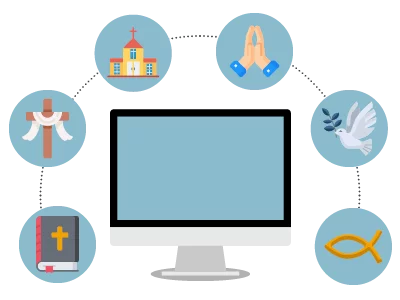In the realm of church administration, the concept of Church Service Hub’s all-inclusive solution suite for churches is nothing short of transformative. This centralized platform offers a plethora of solutions designed to streamline various aspects of church operations, catering to the diverse needs of congregations worldwide. Among its key offerings are Membership Management, Giving Management, In-App Mobile Giving, Community Management, Events Organization, Church Services Management, Ministry Management, Prayer Request Management, Volunteer Management, and Live Streaming.
Membership Management within Church Service Hub simplifies the task of maintaining a comprehensive database of church members and visitors. This feature allows administrators to easily update and access member information, facilitate efficient communication and fostering a sense of community among congregants.
Giving Management is another vital solution provided by Church Service Hub. It offers tools for recording and managing financial contributions from church members, ensuring transparency and accountability in financial matters. This feature plays a crucial role in supporting the financial health and sustainability of a church.
Community Management capabilities within Church Service Hub empower church leaders to engage with their community effectively. From organizing outreach programs to coordinating volunteer efforts, this solution facilitates meaningful interactions and strengthens the church’s ties with the broader community.
Events Organization is made effortless with Church Service Hub’s event management tools. Church administrators can create, promote, and manage various events, from worship services to social gatherings, all within a centralized platform. This streamlines the event planning process and enhances attendance and participation.
Church Services Management ensures smooth and seamless execution of worship services and other religious ceremonies. Church Service Hub provides tools for scheduling services, managing volunteers, and coordinating logistics, allowing for a more organized and meaningful worship experience for congregants.
Ministry Management is simplified with Church Service Hub’s dedicated features for overseeing the various ministries within the church. From tracking ministry activities to managing resources and volunteers, this service empowers church leaders to effectively support and nurture the growth of their ministries.
Prayer Request Management allows congregants to submit prayer requests easily and securely through the Church Service Hub platform. This feature facilitates prayerful support and intercession within the church community, fostering a culture of care and compassion among members.
Additionally, Church Service Hub offers a mobile app for church members and visitors, providing convenient access to all services and special features. Users can access the Bible, take sermon notes, and participate in live streaming of church services, connect with fellow brethren through the Communities module, apply and participate in various church ministries, apply for volunteering opportunities, access the church library, access all church media, etc. This comprehensive app enhances user engagement and connectivity with the church community, allowing for a more immersive and meaningful spiritual experience.
In conclusion, Church Service Hub represents a groundbreaking solution suite for enhancing church administration and fostering vibrant church communities. By offering a wide range of solutions tailored to the specific needs of churches, this centralized platform revolutionizes the way churches manage their operations and engage with their members and communities. With its user-friendly interface, mobile app accessibility, and all its special features, Church Service Hub is poised to become an indispensable tool for churches seeking to maximize efficiency and effectiveness in fulfilling their mission.









